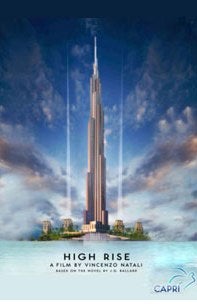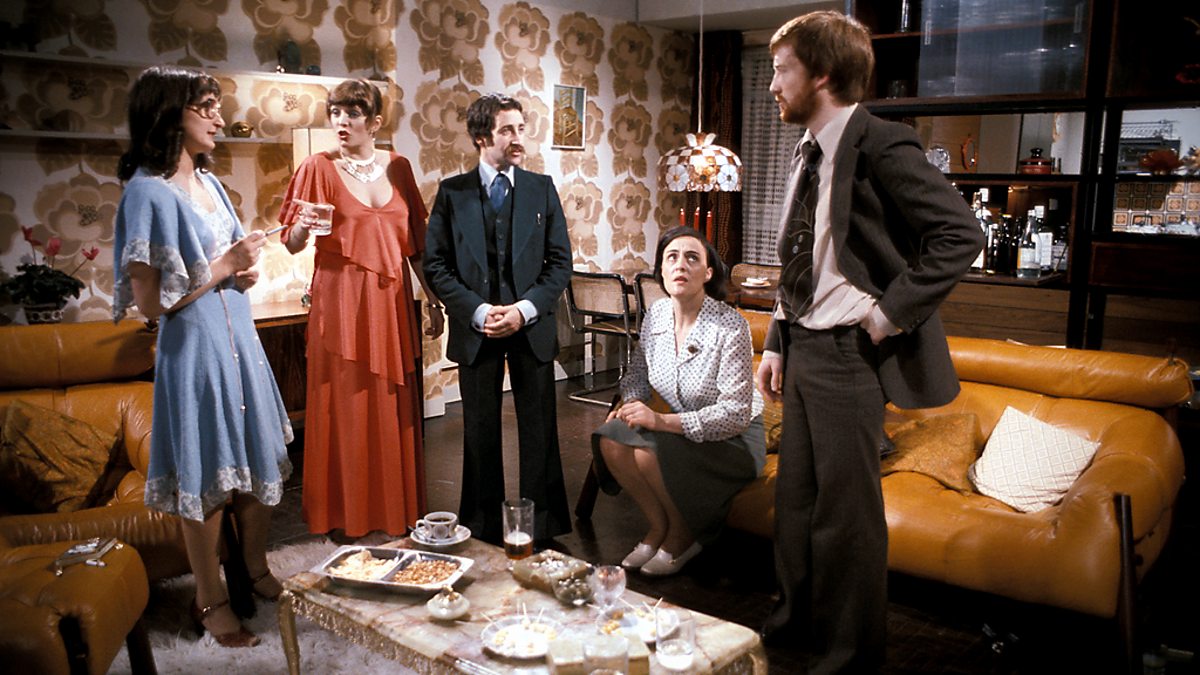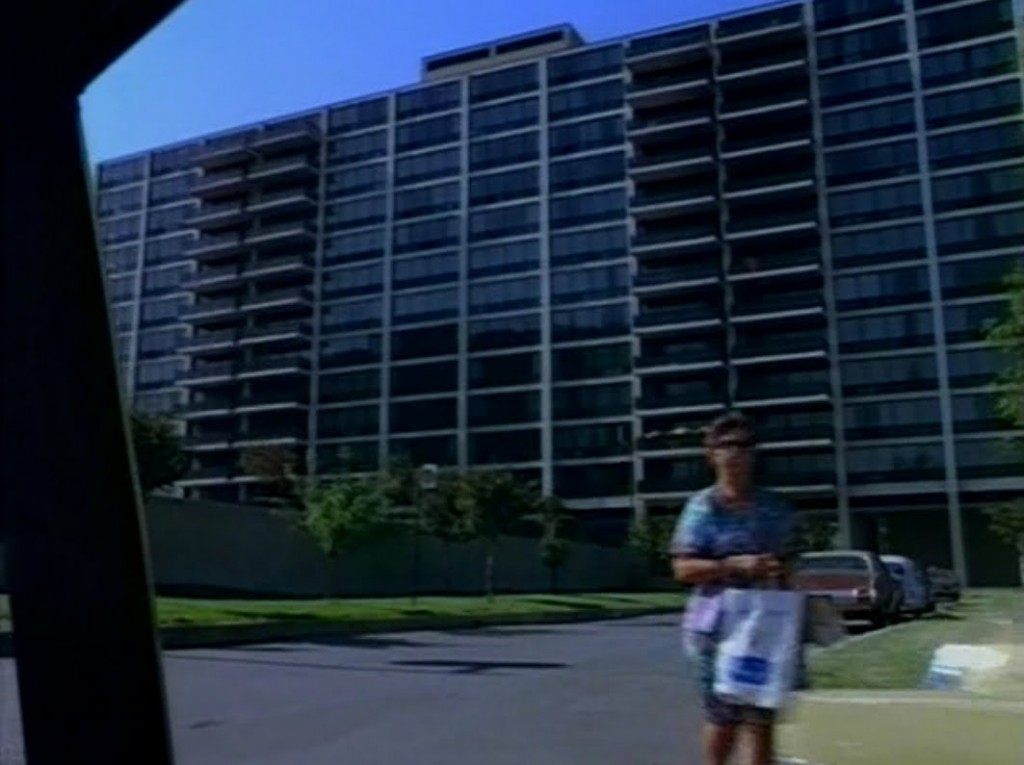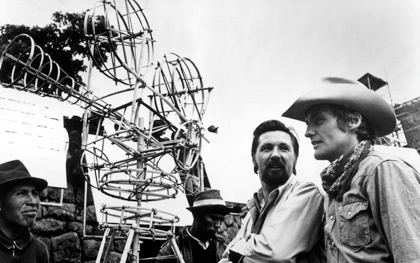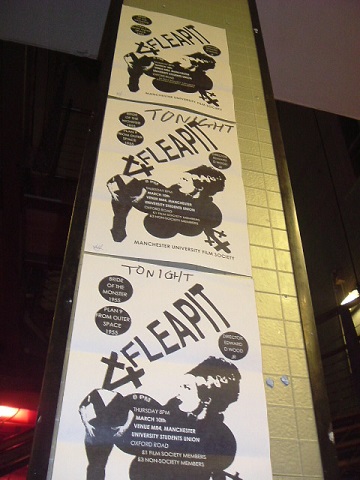A recurrent trope of the ongoing Slender Man
narratives is the uncanny representation of public / recreational areas:
playgrounds, parklands, nature trails. There’s the Red Tower in Marble Hornets, an industrial structure
located somewhere in Oak Mountain State Park, Alabama; the Rainwood day-camp in
DarkHarvest00 and the boardwalk in
Victor Park, Florida that serves as a key location in TribeTwelve. These are each open, ostensibly public spaces geared
towards outdoor pursuits, the preservation of wildlife habitats and an attempt
to connect ‘leisure’ with the experience of ‘nature’. As they appear in the
videos, they’re also strangely typical,
like something out of Patrick McGoohan’s The
Prisoner, a generic packaging of nature as a series of non-descript
features: the lake, the camp, the tower. Before it came to something of an
abrupt halt, the Marble Hornets team
appeared to be mapping out a similar territory in their follow-up Clear Lakes 44. Set in what appeared to
be a suburban housing project, its unobtrusive landscaping, sparse interiors
and pleasant but resolutely unexceptional vistas created a sterile, resonant
ambience out of which the anomalies
of the series emerged.
As well as offering convenient ‘found’ locations for the
production of these videos, the use of civic non-places clearly fits in with
the ideas and aesthetic of the ‘original’ Slender Man meme. Posted by Eric
Knudsen / Victor Surge on the Something Awful forum in 2009, one of his photo-shopped images attributed to ‘City of
Stirling Libraries, Local Studies Collection’, depicted a group of children at
a playground. Visible in the background is a tall, elongated figure with
tendril-arms who holds court over a second group. It’s not clear whether they are
departing the scene in the company of the Slender Man or if they are approaching
the children in the foreground. To this already unsettling scene Knudsen
appended short, caption-like texts that permitted it to leap from doctored
image to active myth. Dated to 1986 with the added detail of ‘photographer:
Mary Thomas, missing since June 13th, 1986’, Knudsen offered the following as
context:
One of two recovered
photographs from the Stirling City Library blaze. Notable for being taken the
day which fourteen children vanished and for what is referred to as “The
Slender Man”. Deformities cited as film defects by officials. Fire at library
occurred one week later. Actual photograph confiscated as evidence.
It’s easy to see why this post quickly went viral. Here, ready for instant development is the signature combination of elements that constitute hauntological folklore. As with the likes of Black Meadow there’s invented history, public institutions, paranormal evidence and a fictional narrative pertaining to catastrophic loss. All this neatly packaged together by way of a framing device of re-mediated, archival investigation, in this case a ‘recovered’ photograph posted to an online forum.
That said, in addition to the form of Knudsen’s image, the importance of its depicted setting should not be underestimated in the appeal of the Slender Man motif. As the subsequent additions to the ‘mythos’ have demonstrated, there is something neo-gothic about the public park, the nature reserve and the recreation ground. Hovering somewhere between the great outdoors and the city limits, alternately crowded and deserted, full of sights and sounds that one should not find in dense urban areas, the spaces are the perfect breeding ground for the Slender Man. The character is similarly neither here nor there, he’s a figure of spooky nostalgia who’s also utterly contemporary and who, like the childhood park can be found in any town, but seems to be indigenous to points of specific visitation.
 |
| Tribe Twelve: The Boardwalk |
This morning, I went for a walk round Foxhill Bank Nature Reserve in Oswaldtwistle. It’s a 22-acre site that occupies a shallow, wooded valley. Tinker Brook (a tributary of the River Hyndburn) runs through the middle and the site as a whole converges around two still-water lodges. The larger of the two holds a small island out of which grows a sprawling tree. As the Lancashire Wildlife Trust describe it,
[…] the lodges were originally constructed for storing water for the dyeing and printing of fabrics and major work was needed to convert [them] from concrete-sided reservoirs into their present-day form. Vegetation has since colonised the lodges producing a mosaic of open water, Reedmace, Soft, Hard and Jointed Rush and Common Reed. This, along with the undisturbed scrub and bramble, provides seclusion for Coots, Moorhens, Mallard and many warblers.
This conversion was completed in 1999. Prior to that the reserve was the former site of the Foxhill Bank Printworks which first opened in 1780. The ‘dyeing and printing’ relates to the production of calico fabric which was a staple Lancashire commodity until the end of the nineteenth century. At the turn of the twentieth century Foxhill bank entered voluntary liquidation but managed to survive as a bleaching plant until 1958. From here it fell into what Hyndburn Council called ‘disuse and ruin’. For more than a decade the plant works stood in some state of dereliction along with their vast bodies of still, stagnant water. Moves were made in 1987 to fill-in the whole site but the public support for a nature reserve won-out and the reconversion began.
Foxhill bank borders onto another area called White
Ash. We used to go walking there and Foxhill Bank, seen from the higher fields
of White Ash was an ominous, chemically-infused wasteland: the point where
White Ash and its brooks simply ran-out. I have a particularly strong memory
from what must have been the late 1980s / early 1990s. I’m looking down from
the top path and I’m seeing a dense, black space full of earth movers and
bulldozers. Half-structures and industrial ruins are strewn about and the two
vast lodges gape open, full of thick, grey water. There doesn’t seem to be any
discernible pathway between the piles of molten rubble. The site also goes on
for miles, it seems. On more than one occasion I think I dreamt of this scene.
Weird, terrifying dreams about reaching the end of everything.
 |
| The Brain |
The conversion of the site was an interesting process. It happened gradually, quietly even. Pathways emerged, industry was covered over. Concessional gestures appeared on the borders. I remember during one walk through White Ash we came across a new clearing in the tree line and a fresh set of climbing bars. Long rusted goalposts were replaced. A horse paddock appeared and before long a bike track pushed its way out of the ground. As the landscape down in the pit was smoothed out, the cosmetic benefits of its transformation spread elsewhere.
This was, and is, all to the good. Foxhill has become a lovely place. Since 1999 it’s developed into a fertile ecosystem that looks as if it’s been there for generations – despite the area’s much longer, deep-rooted industrial heritage: an underlying, two hundred-year history of dyeing, bleaching and chemical processing. For me through, the site extends a pull precisely because of the proximity of this ‘other’ life. In part, I think I walked out this morning looking for, or at least hoping to find, traces of Foxhill’s shadow-self: the supermarket trollies that float in the brook; the iron bars fixed into the flowing water that shore up the flotsam; the vague chemical sheen that’s still carried by the main lodge.
This sense of prior form is, I think, what Marble Hornets and Tribe Twelve et al are keying into via their choice of location. Particularly in the case of Adam Rosner’s Tribe Twelve, the Victor Park boardwalk becomes the site of the Slender Man’s first appearance in the series: complete with the character’s accompanying video distortion. Just before this visitation, Milo Asher – the subject of the haunting – expresses his utter disinterest in the lake at the end of the boardwalk: there’s nothing there. In amongst its themes of visitation and disappearance, the first few episodes of Tribe Twelve capture the intense boredom of its suburban environment. Neat houses surround ornamental lakes, finely cut grass borders neat roads and the brand-new, flat-pack boardwalk leads to a neat, almost off-the-shelf, body of water. It’s the type of polythene space which is utterly at odds with the dense, ancient and peripheral woodlands where we might expect to find the supernatural. And yet, the Slender Man appears.
This combination of sanitized space and anomalous event brings to mind the final scenes of Edward Hunt’s The Brain (1988) in which a superimposed triangle containing a hideous face appears to rupture a sedate suburban horizon. It’s not an image of that which is long-buried within the location but something which is intradiegetic, existing momentarily in the space between the viewer and the depicted location. Hunt’s ‘Brain’, like the Slender Man is a figure that’s designed to suit these depthless spaces, those which have truncated or otherwise shallow histories. Were Foxhill Bank ever to generate its own monsters (stalking things in white calico hoods - the uniforms of solitary convicts?) they would be similarly interstitial. Despite its deep roots, the site has neither erased nor buried its industrial mould. Wait until the ice has left the surface of the lodge and take a sounding. Physically, the water is very deep. But it sits within a basin that’s been re-sculpted out of the existing industrial curvature. There’s no subterranean history beneath it. Just two spaces intersecting in simultaneity, possibly generating a third.





















